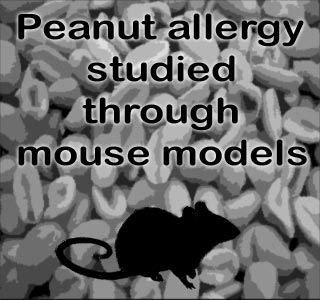
Peanut allergy is believed to have life threatening fatal allergic reactions, which cause about a 100 annual deaths in the U.S. There are numerous allergic reactions to food like vomiting, difficulty breathing, mild hives and anaphylaxis among others.
Anthony S. Fauci, M.D., Director of the National Institute of Allergy and Infectious Diseases says that, “Food allergies affect the health and quality of life of many Americans, particularly young children. Finding an animal model that mimics a severe human allergic reaction to peanuts will help us better understand peanut allergy and develop new and improved treatment and prevention strategies.â€
According to the researchers, a hurdle in the development of animal model of food allergy is that animals are usually not allergic to food. Thus, they had to be fed foodstuffs that were manipulated in such a way so as to incite a reaction in animals akin to human reaction to allergies.
This research team was led by Paul Bryce, Ph.D., Feinberg School of Medicine at Northwestern University. They fed the mice a mixture of whole peanut extract (WPE) and the staphylococcal enterotoxin B (SEB) toxin from the Staphylococcus aureus bacteria. This mixture enticed a reaction in mice, which apes the human anaphylactic reaction to peanuts.
The researchers noticed that these mice more than the standard number of eosinophils. They are white blood cells which are usually related to allergy-related inflammation. They further state that a more detailed analysis is required in order to evaluate the part that eosinophils plays in human food allergy.
The researchers hope that this new animal model of food allergy may prove to be essential in future studies for better understanding food allergies.
This research was funded by the National Institutes of Health’s (NIH) component, NIAID.
Their findings appear in the Journal of Allergy and Clinical Immunology.
